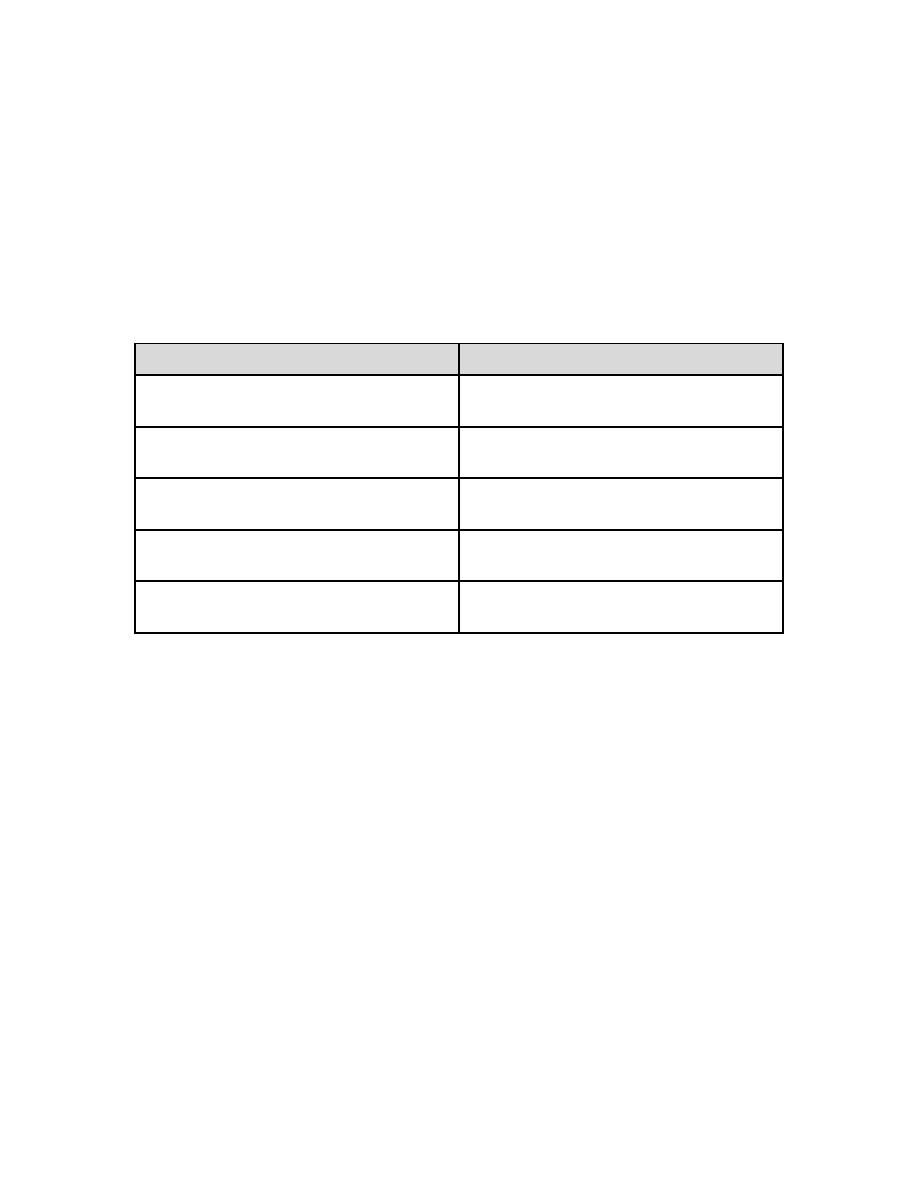
UFC 3-560-01
6 December 2006
Including change 1, 7 December 2006
5-2.5.7 Care of Line Hose and Insulator Hoods. Line hoses and hoods must be air
dried. Store hoses and hoods in compartments so that no part is strained or distorted.
5-2.6
Test Intervals for Rubber Protective Equipment. Rubber protective
equipment must be subjected to periodic electrical tests. Table 5-2 provides the OSHA
29 CFR 1910.137 required test intervals for rubber insulating equipment.
Table 5-2. Rubber Insulating Equipment Test Intervals
Type of Equipment
Test Frequency
Upon indication that insulating value is
Rubber insulating line hose
suspect
Upon indication that insulating value is
Rubber insulating covers
suspect
Before first issue and every 12 months
Rubber insulating blankets
thereafter
Before first issue and every 6 months
Rubber insulating gloves
thereafter
Before first issue and every 12 months
Rubber insulating sleeves
thereafter
Note: If the insulating equipment has been electrically tested, but not issued for service,
it may not be placed into service unless it has been electrically tested within the
previous 12 months.
5-3
ELEVATED WORK. Ensure workers, materials, and equipment are properly
supported and adequately fastened in place before starting work in a position elevated
above the ground. The use of ladders, scaffolds, and boatswain's chairs as temporary
work locations can result in injuries if safe practices are not followed carefully. Chapter
10 addresses the safe support of workers when working on wooden poles, associated
structures, and on any portion of a tree.
5-3.1
The worker must be protected by a safety harness attached to a lifeline. The
lifeline must be securely attached to a substantial member of the structure (not to a
scaffold), or to securely rigged lines. The lifeline must safely suspend the worker in
case of a fall (refer to Figure 5-1). A safety belt is not an acceptable means of fall
protection.
5-4



 Previous Page
Previous Page
